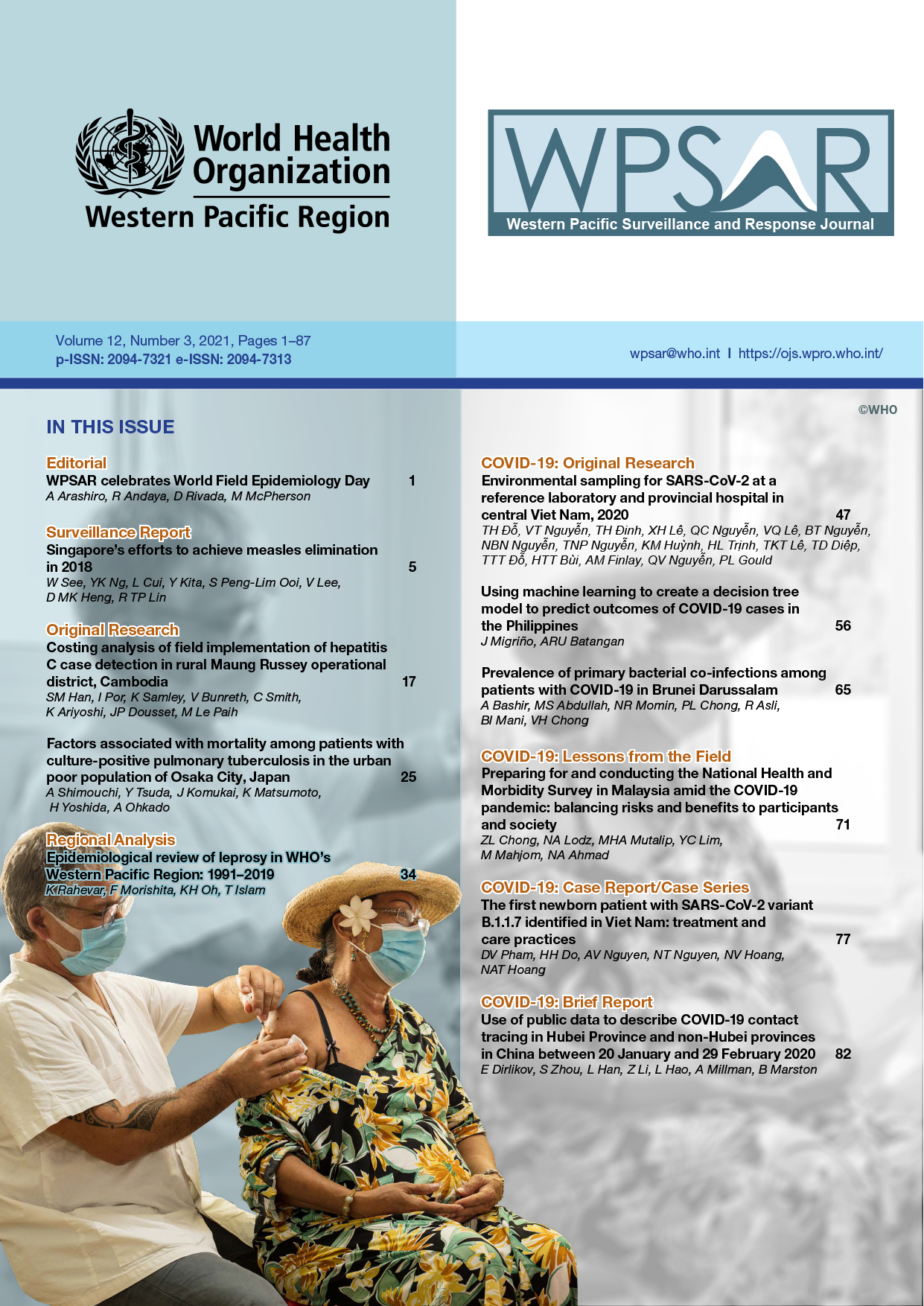Prevalence of primary bacterial co-infections among patients with COVID-19 in Brunei Darussalam
DOI:
https://doi.org/10.5365/wpsar.2021.12.3.856Abstract
Objective: Bacterial co-infections in cases of coronavirus disease 2019 (COVID-19) can lead to less favourable outcomes. The aim of this study was to determine the prevalence of primary bacterial co-infections among patients with COVID-19 in Brunei Darussalam.
Methods: Seventy-one of 180 patients admitted to the National Isolation Centre between 9 March 2020 and 4 February 2021 were screened for primary bacterial co-infection (infection occurring <48 h from admission). We compared patients with a primary bacterial co-infection to those without.
Results: Of the 71 screened patients, 8 (11.2%) had a primary bacterial co-infection (sputum 37.5% [6/16], blood 2.8% [1/36], urine 1.7% [1/60]), for a period prevalence rate of 4.4% (respiratory tract infection 3.3% [6/180], bloodstream 0.6% [1/180], urine 0.6% [1/180]) among all COVID-19 patients. Older age, presence of comorbidity, symptoms at admission (fever, dyspnoea, nausea/vomiting), abnormal chest X-ray (CXR) and more severe COVID-19 (P < 0.05) were associated with primary bacterial co-infection. Primary bacterial co-infection was also associated with development of secondary infection and death (all P < 0.05). Only one patient with primary bacterial co-infection died (methicillin-sensitive Staphylococcus aureus septicaemia and multiorgan failure).
Conclusions: Our study showed that primary bacterial co-infection affected 4.4% of patients with COVID-19 in Brunei Darussalam. Older age, presence of comorbidity, symptoms and abnormal CXR at admission and more severe disease were associated with a primary bacterial co-infection. Lower respiratory tract infection was the most common co-infection.

